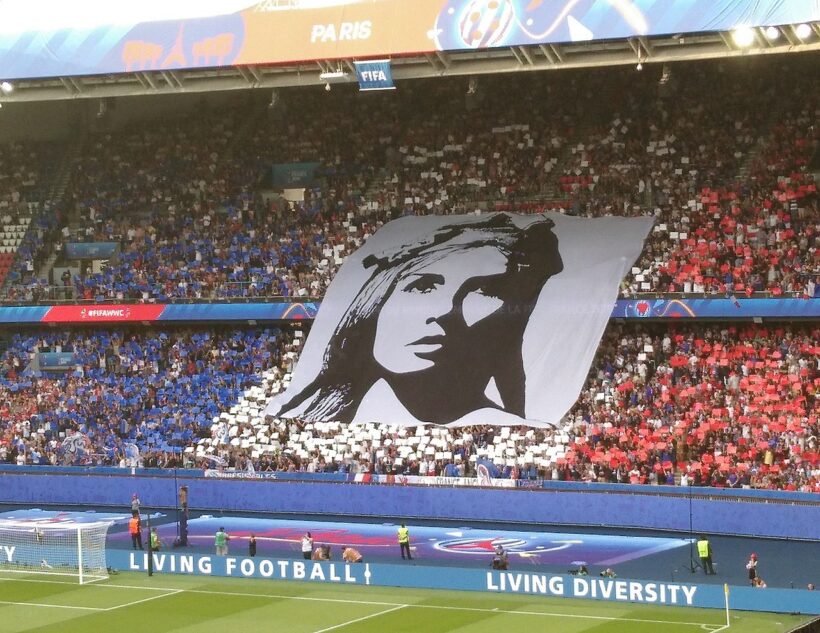The ninth edition of the Women’s World Cup in Australia and New Zealand kicked off on 20 July in Auckland with the home side’s historic one-nil win over Norway.
Under the official slogan “Greatness without limits”, thirty-two teams from five continents will compete for the ultimate trophy.
Beyond the sporting delights and the joys and sorrows that the results will bring to the passionate fans of each team, this tournament promises to break several records, taking the women’s football competition to a new level.
In the opening matches, a crowd of more than 42,000 attended New Zealand’s win over Norway, a record for a women’s or men’s football match in the country. Similarly, in Sydney, almost 76,000 fans turned out for Australia’s match against the Republic of Ireland, the highest attendance at a FIFA Women’s World Cup in 24 years.
The match between Korea Republic and Colombia, in which the South American team beat their Asian counterparts 2-0, closed the first round of matches on Tuesday and FIFA reported that the total attendance rose to almost 550,000 for the 16 matches played. The average attendance thus stood at 28,721 spectators, an increase of 54 per cent compared to the same matches in France 2019. Meanwhile, ticket sales have already exceeded 1.5 million for the 64 matches, the highest of all previous Women’s World Cups.
Moreover, the tournament is being broadcast in 200 territories by 130 broadcasters, which according to Gianni Infantino, president of the organising body, will reach a global audience of 2 billion, up from 112 million for the previous edition in France.
The monetary incentives for female players also play a role that has never been achieved before. FIFA has confirmed that the 732 female footballers participating in the 2023 World Cup will be paid at least 30,000 dollars, a sum that for many of them will be significant, as the average annual salary for women who play football professionally is 14,000 dollars, while many are still semi-professional. The amount increases if the teams have good results, with each player on the winning team earning nine times the initial amount.
However, the figure shows a gigantic disparity with the $440 million prize money paid to the men who played in Qatar 2022. The head of FIFA said in this regard that the aim is to equalise the prizes for the men’s World Cup in 2026 and the women’s World Cup in 2027.
But beyond the economic issue and the commercial aspect that FIFA places as a condition for the professionalisation and expansion of women’s football, this World Cup represents a good boost to the trend of women’s emancipation that is being observed in all ambits, leaving behind discriminatory prejudices.
The female players, but also a large number of female referees, managers, fitness trainers, reporters and commentators are an excellent example for many girls who, until now, could only get excited from the stands of the stadium, choosing their idols in this sport from among male figures.
Although big stars such as Alex Morgan (USA), Lucy Bronze (England), Ada Hegerberg (Norway), Marta Vieira de Silva (Brazil) and Megan Rapinoe (USA), a pioneer in the fight for equality, do not yet enjoy the publicity of their male counterparts, many female players’ names are already being mentioned in the daily conversations of millions of football fans, something that was unthinkable until very recently.
Another aspect that is likely to have an inflection point after this World Cup is the dominance of the global North, spreading the practice of this sport among women in all corners of the world, helping many women to overcome patriarchal and naturalistic habits that have been established for centuries.
Geopolitics and the unfair distribution of money are also felt in women’s football. To date, the tournament, which has been played since 1991, has had four champions: The United States four times, Germany twice, and Japan and Norway once each.
But this disproportion in favour of the global North, which thrives on sucking talent from the South because of the financial strength of its clubs and leagues, is undoubtedly about to be broken. The girls of the global South, riding a wave of global levelling and multipolarity unparalleled in history, are already asserting their place on the podium of equal rights and opportunities with attitude and dexterity.










